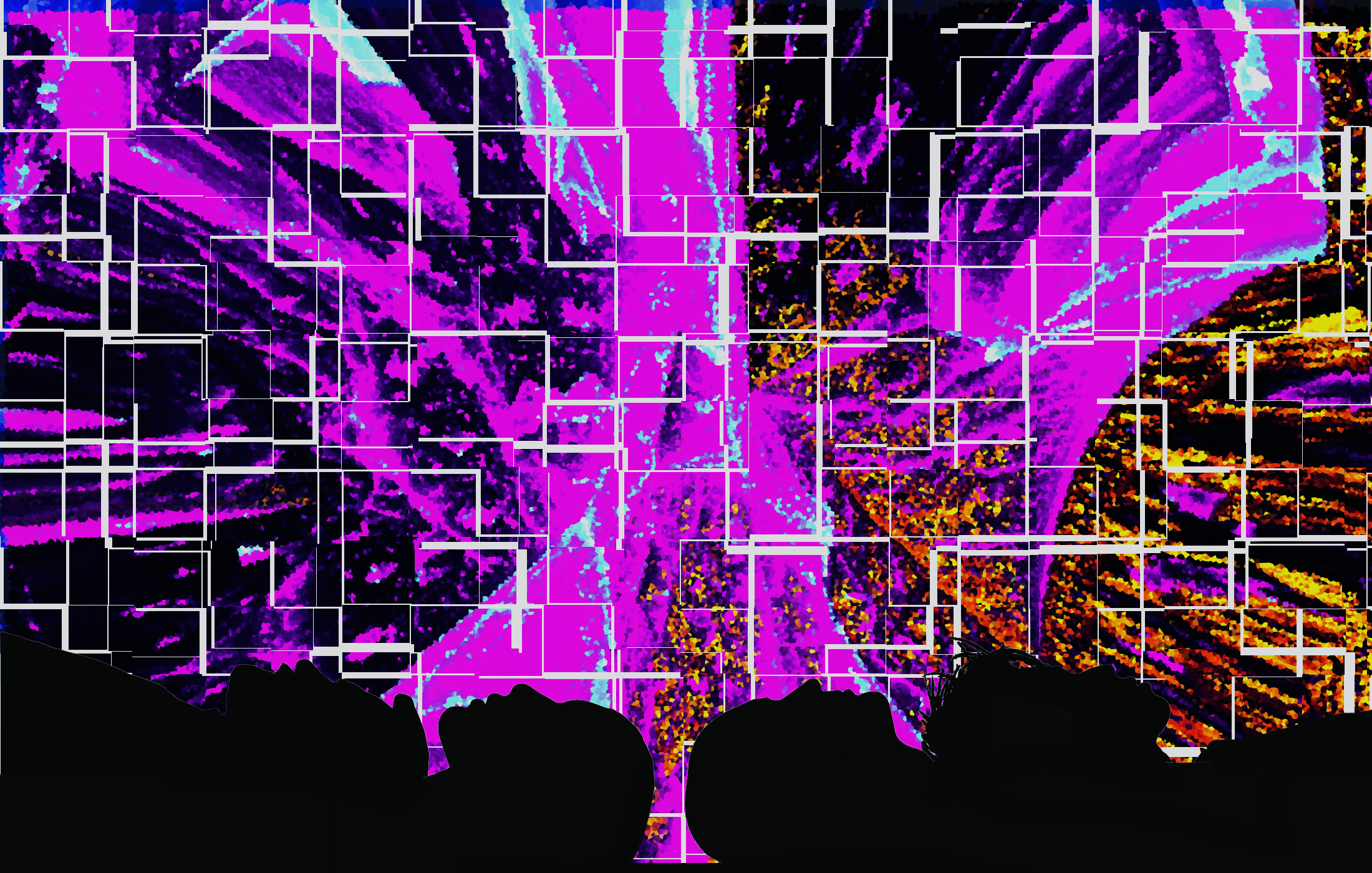Until October 17, Montreal’s Société des Arts Technologiques (SAT) is host to Chaos & Order: A Mathematical Symphony, a mesmerizing film that presents viewers with the opportunity to experience math visually and sonically at giant proportions. The film, created by a German team made up of media artist Rocco Helmchen and composer Johannes Kraas, is presented by the SAT as an exploration of “one of the fundamental links between reality and mathematical abstraction,” manifested in computer-generated animation and a complementary symphonic-electronic soundtrack. Watching Chaos & Order is a unique cinematic experience – closer to stepping inside a giant, melodic kaleidoscope than sitting passively at the movies.
The film is being screened at the Satosphere, an immersive, dome-shaped theatre that extends from the roof of the SAT building at 1201 St. Laurent. A testament to Montreal’s innovative art scene, the SAT is a non-profit organization that has been working since 1996 to foster experimentation in immersive arts and technologies.
The Satosphere, which opened in 2011, exemplifies the multi-functional spaces housed in the SAT building, as it can serve as a venue for performances, visualization projects, film screenings, and dance or game programs. A 360-degree screen, eight projectors, and 157 speakers envelop the circular floor of the theater, where an array of plush futons have been placed around the room for the Chaos & Order screening. The audience is encouraged to find a comfortable position from which to gaze up and around at Helmchen and Kraas’ portrayal of the beauty of mathematics.
The film is comprised of four sections: “form,” “simulation,” “algorithm,” and “fractal,” each of which use dizzying colours and perspective to dynamically illustrate mathematical structures and systems like geodesic spheres, n-body simulations, thermodynamics, or fractal sets. Sections shifting from representations of geometric forms to chaos theory are blended together with quick transition shots of urban environments. These short bits of reality then break apart into digital animation and lead the audience back into Helmchen and Kraas’ psychedelic audiovisuals.
Each mathematical structure is given a small label in its on-screen introduction, yet no further explanation or audio narration is included in the film. If viewers are not already familiar with math and science, those expecting a math lesson may be disappointed when they cannot find much more than beauty in the screening. After seeing Chaos & Order, Zoltan Bardos, a U3 Electrical Engineering student, remarked, “It was way more of an experience than a lesson. I liked that I could recognize some of the elements in the show having studied math, but if you didn’t already understand it going in, I don’t think you would have brought much away from it.”
For those who are interested in math, this screening presents a unique opportunity to visualize complex concepts. For Bardos, previous knowledge of fractal patterns made the show interesting. “I knew that to build a fractal really isn’t that complicated, all you need is a simple recursive equation that is pretty basic on its own, and if you just let it run it will create these highly complex images,” he said. “I think that the contrast between the simplicity of math and the super-complexity it can lead to in the macro scale was key to the show,” said Bardos.
Whether math is your passion and you want to see the beauty of the forms described by formulas with which you are familiar, or if you have no mathematical background at all but are interested in the surreal beauty of immersive colour, light, and sound, the Satosphere makes going to see Chaos & Order worthwhile.

